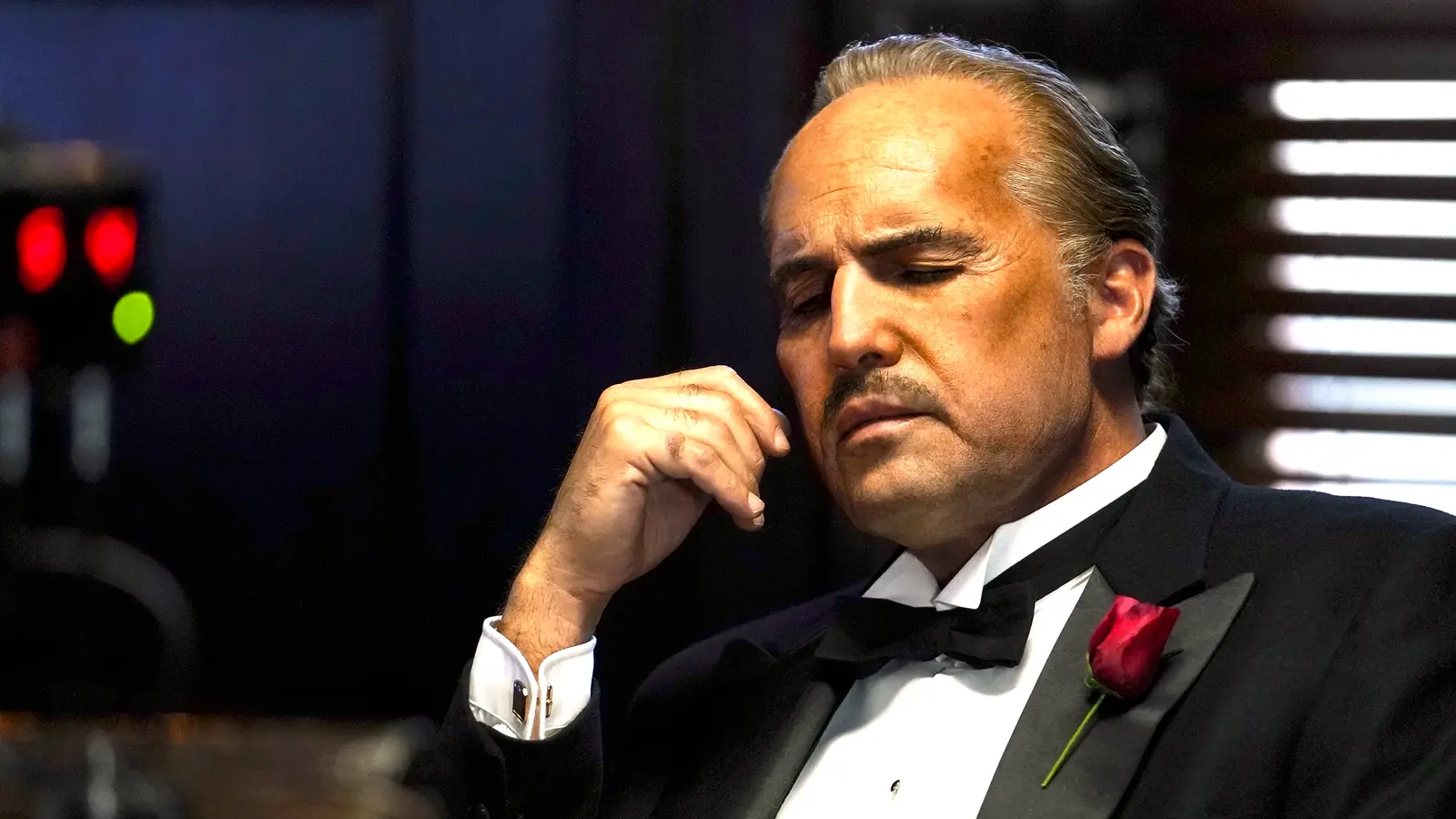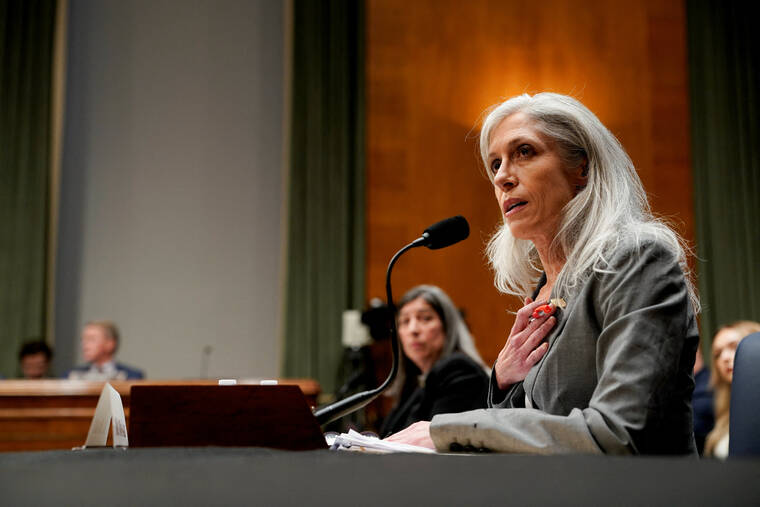
In a 1973 interview on The Dick Cavett Show, enigmatic acting icon Marlon Brando was asked about his life spent in “excess” and “lust.” What did the actor have to say about it? “I don’t think it’s worth going into,” he said. Brando then did his best to steer the conversation towards Native American rights and a critique of the perpetuation of fluff in celebrity culture, a perpetuation he saw Dick Cavett as being particularly culpable in.
Waltzing With Brando, which sees Billy Zane as the larger-than-life figure, begins with Brando’s appearance on the show — but just to dramatize that brief moment in which Brando patently refuses to discuss his very real, very notable indulgences. Brando here does not get into his politics, his defense of indigenous rights, his scourge against the lack of real-world reckoning endemic to Hollywood consumerism. Instead, the film cuts away to the meat of its story: how Brando once upon a time bought the tiny Tahitian atoll Teti’aroa and hired ecological architect Bernard Judge (Jon Heder) to build him a retirement residence.
Waltzing With Brando Never Goes Below The Surface
It Keeps Us, Frustratingly, At A Perpetual Birds-Eye View
Perhaps inadvertently, Bill Fishman’s adaptation of Judge’s memoir of the same name follows that opening salvo by never really indulging in any real, below-the-surface investigation of the man behind the myth. Brando’s notable activism work — his devotion to Black civil rights in the 1960s, his foregrounding of the mistreatment of Native Americans when the subject was deeply taboo, his care for ecological preservation — is given mere topographical service. The work is mentioned but never explored in concrete terms except through the gratuitous use of archival footage and photographs.
Nor is Brando’s tumultuous personal life given much consideration at all. Gone here is any talk of Brando’s repeated mistreatment of his several wives and partners, his lack of presence in the lives of his (acknowledged) 11 children. To be sure, Brando’s life on Tahiti is an exceptional story worth telling, but Fishman chooses its least exceptional entry point: a blandly rendered architect whose continuous, unnecessary narration gives us the only limited view of him we are privy to.
The film begins with Brando’s appearance on Cavett’s show before flashing back to 1968 when Judge is hired by real estate developer Jack Bellin (a criminally underused Rob Corddry) to go to Tahiti to scout for a suitable piece of land for a new luxury resort. After a series of rather screwy misadventures, Judge finds himself on Brando’s private estate, and the two become fast friends.
As Judge peruses the island on Bellin’s behalf, he finds himself tempted by Michelle (Camille Razat, whose more fiery character in Emily in Paris seems like a distant cry), and is slowly pulled into the hedonistic pleasures of Brando’s circle. Despite the real-life Brando’s very open bisexuality, the film is oddly prudish about sex and even more out of its depth in its discussion of queerness.
If the film is meant to be about carrying the weight of legend… neither Fishman nor Heder’s performance can make that intention indelible.
There is one especially odd moment when Judge is at a restaurant and is waited upon by a trans server, where he seems positively agog at the notion of a gender-queer person. Why the discussion is included is absolutely unclear. In another scene, Heder is seduced by Madame Leroy (an uncomfortably hammy Tia Carrere), in an extended sequence that has essentially no bearing on the narrative.
The movie is packed with these strange choices. In a handful of moments, it breaks into a high-school-level slideshow. Waltzing with Brando is in a state of persistent confusion; it seems it never knows exactly what story it wants to tell. For much of its runtime, the film hews closer to dry reportage, assuming, erroneously, that we might at all care just how the eventual estate was built.
At other times, it dips its toes into the salacious waters of Brando’s casual attitude towards sex and money, but only just, like it is a moving Wikipedia entry. Still, at others, we are prone to the rather rote and inconsequential ways this long-term job affects Judge’s marriage. Another strange choice: casting Richard Dreyfuss, who seems positively asleep at the wheel as Brando’s financial advisor, Seymour Kraft.
Billy Zane’s Performance Elevates A Poor Script
But It Can’t Save The Movie
Zane’s Brando is, to be fair, an exceptional characterization. Much credit goes to the film’s makeup team, as he is a dead ringer for the actor he emulates, but it is Zane who elevates the poorly written script to impressive heights, giving him the complexity, contradiction, and curiosity that Fishman’s words sorely lack. It’s clear Zane has done his research, imbuing his performance with all the physical and vocal attributes that so defined Brando, and doing it in such a way that never feels impressionistic but, admirably, lived in.
It’s a shame, then, that the film cannot contain Zane’s Herculean effort, and that he is matched up against Heder. The latter’s performance is obnoxiously hokey and frequently bizarre. The actor seems like he is still delivering quirky one-liners from Napoleon Dynamite. Like many actors who were revealed in stark relief against Brando, Heder is completely mismatched next to Zane.
It doesn’t help that Fishman’s script has Heder speaking several lines directly to the camera in an inconsistent breaking of the fourth wall. In one especially confounding choice, after a limp but serious domestic dispute between Judge and his wife, Dana (Alaina Huffman), Heder sardonically turns to the camera and says, “Well, that didn’t turn out as I hoped,” as if the possibility of divorce is just a silly sketch. His voice-over is too often used to paper over the Swiss cheese-sized holes in the script. There are few lines that come out of his mouth that feel genuine.
Most biopics fall into the trap of being overtly hagiographic, failing to take a legend off its pedestal in a way that would make us grasp their humanity. Waltzing with Brando falls into that trap, too, mostly through a repeated gesture towards verisimilitude in which Zane recreates some of Brando’s most famous moments from The Godfather and Last Tango in Paris, but it is even guiltier in its sidelining of its star to the background of his own story. If the film is meant to be about carrying the weight of legend, how it is more a burden on those around the icon than the icon itself, neither Fishman nor Heder’s performance can make that intention indelible.



